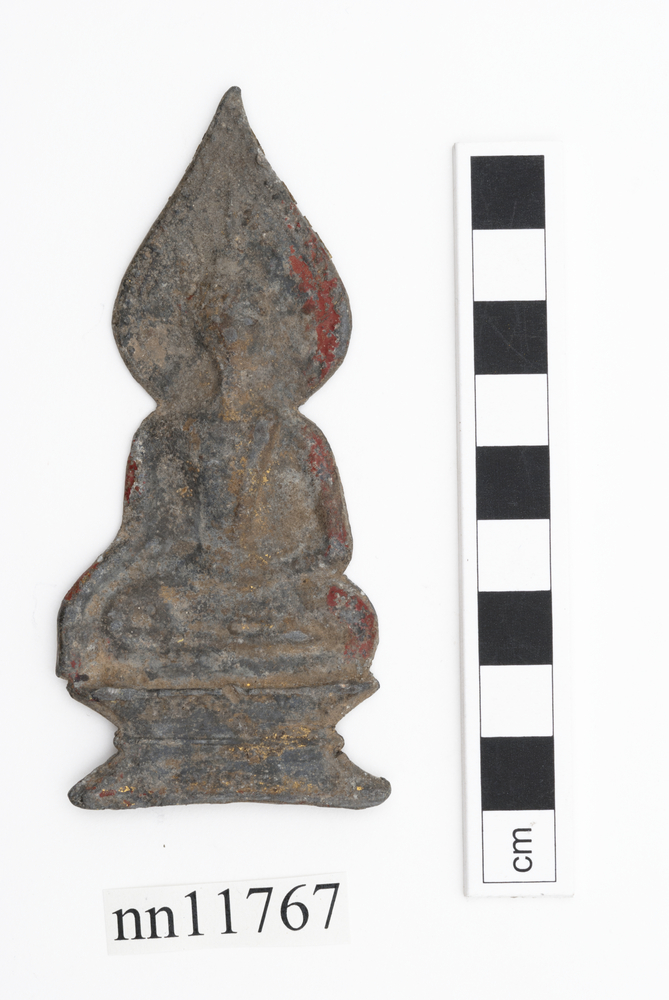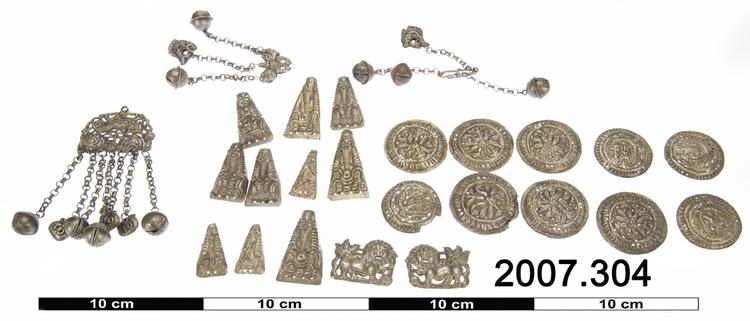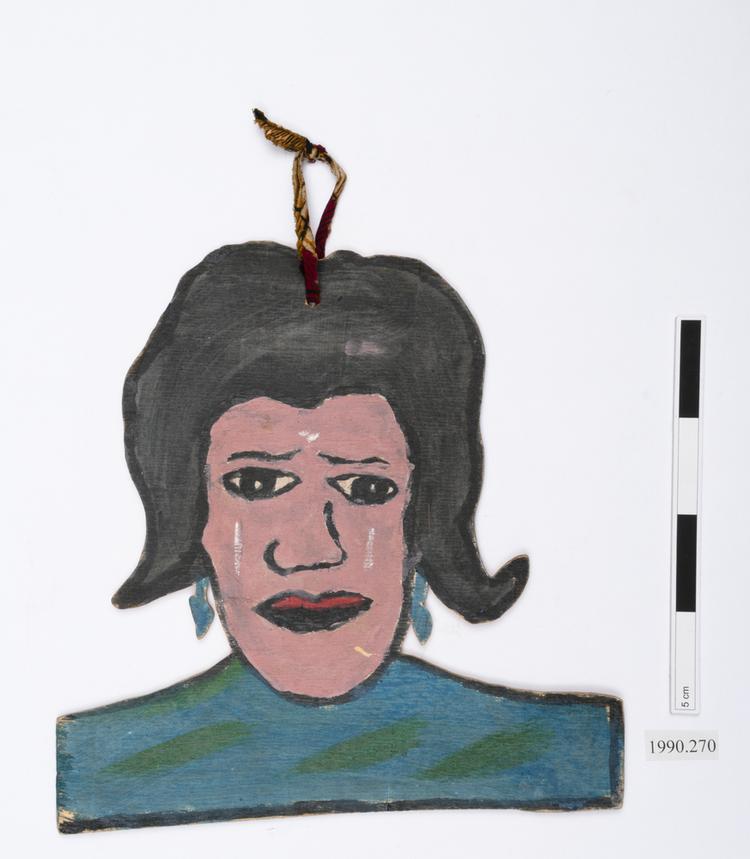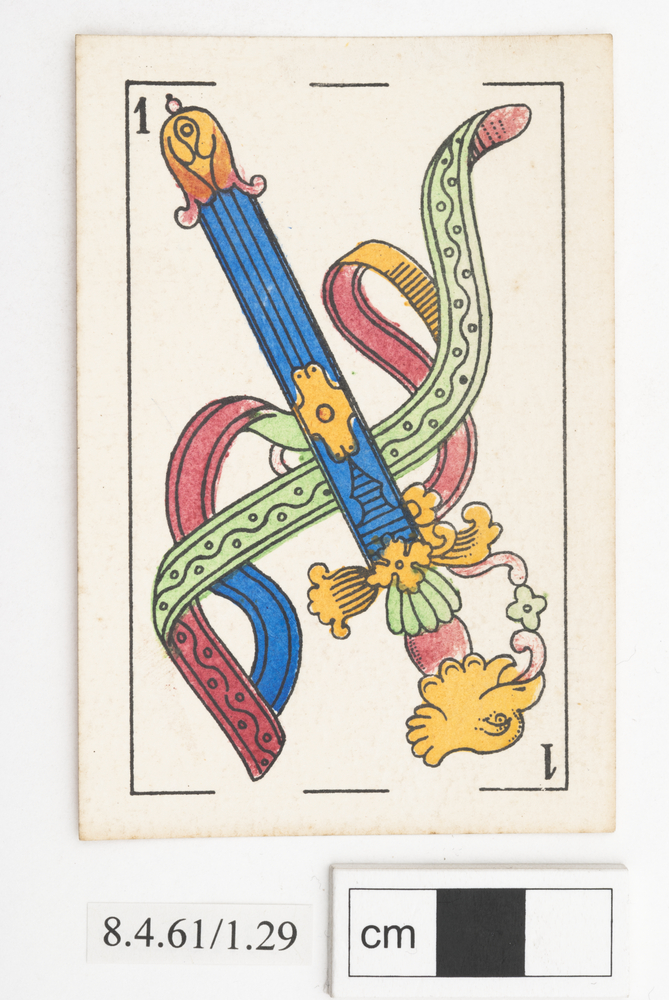
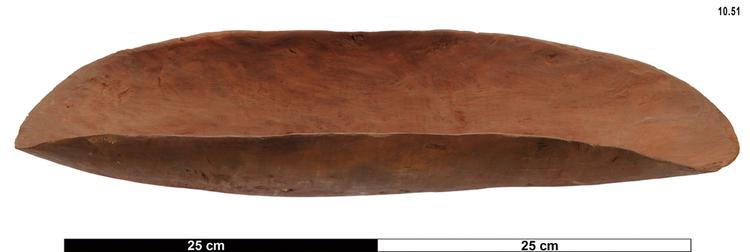
A shallow wooden dish of oval shape, most likely to be carved from ironbark wood. The entire surface is coloured with red pigment. The dish is formed from a single piece of wood which curves upwards at each side.
Wooden Dish, Ilkata, Aranda people, Hermannsburg, Northern Territory, Australia. For the Southern Aranda of Australia’s ‘red centre’, wooden bowls such as this example were both extremely difficult to create, and immensely useful. Many other indigenous peoples of Australia (and also some parts of New Guinea) traditionally made wooden carrying vessels from the bark of certain trees, by cutting off a rectangular sheet and folding up the corners. In Australia’s central desert where the Aranda hold their traditional lands, however, no such easily barked trees existed. Instead, this wooden dish, known as an ilkata or tanna, was carved from a single branch of Eucalyptus wood. Given that Aranda craftsmen carved such objects with stone tools at the time this example was collected, the less cutting that was required the better. Because of this, it was wiser to find the right branch than hack away at the wrong branch, and so the outer curve of this dish is the exact outer curve of the branch that it came from. The carver split the bowl away from the branch by using his axe as much like a wedge as like a knife. Red hot embers from a campfire would often be heaped again and again on the upper surface to burn away the inside, and then the final shape was neatened up using the axe more delicately. Although its low ends meant it was of little use for storing water, ilkata dishes such as this were used for a multitude of different purposes, from carrying root and animal foods home short distances from the bush to sifting grass seeds from their chaff like a Western threshing basket. Such trays could even form the basic framework of a backpack, by being tied onto one hip or the lower back using cordage. Wood. Early 20th Century. Collected by Mr. Henry James Hillier during his time as a mission teacher at Hermannsberg Mission 1906-1910, and presented to the Horniman Museum in 1910.



